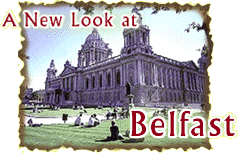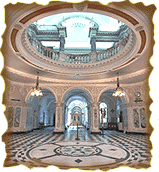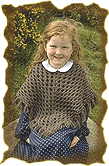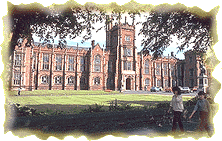 |
 |
 |
|
|||
|
Belfast
If you limited yourself to Bing Crosby's version of Ireland you'd picture rippling trout streams and women in the meadows making hay. You'd think of the Irish as jolly, fun fellows -- like MacNamara and his band -- where Hennessy Tennessee tootles his flute and the music's something grand.
And what better way to start than this - a group of pensioners happily singing together at a luncheon club in a Church hall near the center of Belfast. But these are Catholics and Protestants and the church is right on the Peace Line - a giant 12-foot high brick wall - built to keep apart Catholic and Protestant communities, to stop them killing each other. In the same building in the evening children from both sides of the wall meet to play together. It's here that the foundations of a real peace are being built in Northern Ireland. Not by the politicians, but by courageous ordinary people. People like Sister Noreen Christian a catholic nun who dares to confront sectarian division by living on the Protestant side of the wall. We meet outside her front door.
But that was two years ago. Today the only things being fired over the wall are bottles and stones - thrown at each other by youths more out of boredom than hatred. If you want to see the wall it's best and safest to get a taxi. Some of the drivers take tourists round the city showing you the scars and explaining the history. The magnificent city hall represents Belfast's wealthier side. I discovered a free tour and got chance to try on the city leaders' grand historic robes, with their mysterious long red sleeves. Thankfully open sewers are no longer one of Belfast's tourist attractions. While I was at the city hall I met Dean and Mary King from Iowa. I asked them what people back home said about them visiting Northern Ireland.
Later that night I stepped into a traditional Irish pub where a live band was playing diddly diddly music. For a whole evening I sat drinking Guinness and Irish whisky entranced.
And during their three days here that's what these Catholic and Protestant children will learn to do. Just up the coast from Corrymeela is one of the country's finest tourist attractions -- the Giants Causeway. It's weird, thousands of hexagonal stones -- like giant organ pipes mysteriously growing out of the seabed. The eighteenth century writer, Dr. Samuel Johnson, allegedly said, "It's worth seeing, but not worth going to see". Ignore him.
So mention Ireland now and I suddenly think of some truly special people, rolling green hills and diddly diddly music. You know, maybe old Bing wasn't far wrong after all. From Northern Ireland, this is Martin Stott for The Savvy Traveler. |
 | American Public Media Home | Search | How to Listen ©2004 American Public Media | Terms of Use | Privacy Policy |

 But I'm a different generation. Mention Ireland and particularly Belfast
to an Englishman like me and I think "bomb blast," "terrorist," IRA,
murder. I need to challenge these dreadful preconceptions.
But I'm a different generation. Mention Ireland and particularly Belfast
to an Englishman like me and I think "bomb blast," "terrorist," IRA,
murder. I need to challenge these dreadful preconceptions.
 Dean King: "'Aren't you scared?' "
Dean King: "'Aren't you scared?' "
 It doesn't sound very harmonious. You'd be forgiven for thinking relations
between these Catholic and Protestant children had broken down completely.
It's a quiz -- the sides are mixed and the children are accusing a
mischievous nun of cheating. She looks delighted to see them joining
forces against her so enthusiastically! I'm here to meet Alastair Kilgour, Corrymeela's assistant director. He tells me he's confident lasting peace is finally coming to Northern Ireland.
It doesn't sound very harmonious. You'd be forgiven for thinking relations
between these Catholic and Protestant children had broken down completely.
It's a quiz -- the sides are mixed and the children are accusing a
mischievous nun of cheating. She looks delighted to see them joining
forces against her so enthusiastically! I'm here to meet Alastair Kilgour, Corrymeela's assistant director. He tells me he's confident lasting peace is finally coming to Northern Ireland.
 Driving through the green rolling countryside to the coast then having
your head nearly blown off by the fresh gusting wind as you clamber down
the cliff path is half the fun of the trip. People always talk about
undiscovered gems -- and now I've found one. The troubles have frightened
so many tourists away from Northern Ireland that you've got it to yourself
practically.
Driving through the green rolling countryside to the coast then having
your head nearly blown off by the fresh gusting wind as you clamber down
the cliff path is half the fun of the trip. People always talk about
undiscovered gems -- and now I've found one. The troubles have frightened
so many tourists away from Northern Ireland that you've got it to yourself
practically.